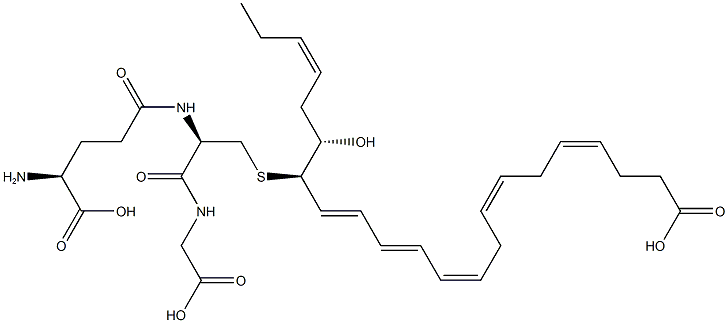PCTR1 (Protein Conjugates in Tissue Regeneration 1)
Modify Date: 2025-08-26 00:05:04

PCTR1 (Protein Conjugates in Tissue Regeneration 1) structure
|
Common Name | PCTR1 (Protein Conjugates in Tissue Regeneration 1) | ||
|---|---|---|---|---|
| CAS Number | 1810710-59-8 | Molecular Weight | 649.8 | |
| Density | N/A | Boiling Point | N/A | |
| Molecular Formula | C32H47N3O9S | Melting Point | N/A | |
| MSDS | N/A | Flash Point | N/A | |
Use of PCTR1 (Protein Conjugates in Tissue Regeneration 1)PCTR1 is a potent monocyte/macrophage agonist, regulating key anti-inflammatory and pro-resolving processes during bacterial infection. PCTR1 is a member of the protectin family of specialized pro-resolving mediators (SPMs)[1]. |
| Name | pctr1 |
|---|
| Description | PCTR1 is a potent monocyte/macrophage agonist, regulating key anti-inflammatory and pro-resolving processes during bacterial infection. PCTR1 is a member of the protectin family of specialized pro-resolving mediators (SPMs)[1]. |
|---|---|
| Related Catalog | |
| In Vitro | PCTR1 is a peptide-containing lipid mediator. PCTR1 is temporally regulated during self-limited inflammation and promotes the resolution of bacterial infection. PCTR1 significantly decreases prostaglandin (PG)E2 (48%), PGD2 (64%), PGF2α (38%), and thromboxane B2 (40%). PCTR1 increases exudate macrophage levels, accelerates clearance of E. coli infection, decreases local inflammatory mediator production, and promotes resolution[1]. PCTR1 is an agonist of human keratinocyte migration and has unique structural features that impart this agonist activity. PCTR1 enhances human keratinocyte migration in a cAMP/PKA-dependent manner. Stimulation of keratinocytes with PCTR1 (10 nM; 15 minutes) significantly elevates levels of cAMP[2]. Cell Viability Assay[2] Cell Line: Primary human epidermal keratinocytes (HPEKp) Concentration: 0.1, 1, and 10 nM Incubation Time: 24 hours Result: In comparison with untreated cells in which approximately 25% of the initially wounded area was covered by cells 24 hours after wounding, 10 nM significantly enhanced migration such that approximately 46% of the wound area was covered by cells at 24 hours after wounding. |
| In Vivo | PCTR1, a lipid mediator, exerts fundamental anti-inflammation and pro-resolution during infection[3]. PCTR1 (50 ng/mice) improves the survival rate in an LPS-induced acute inflammatory mouse model[3]. Animal Model: C57BL/6J wild-type male mice (8-10 weeks old, 22-25 g)[3] Dosage: 50 ng/mice Administration: Administered via the tail vein 1 h after LPS (15 mg/kg) intraperitoneal injection. The survival rate was recorded every day for 7 days Result: Compared with the LPS group, the survival rate was significantly higher in the LPS + PCTR1 group, indicating that PCTR1 markedly increases the survival rate. |
| References |
| Molecular Formula | C32H47N3O9S |
|---|---|
| Molecular Weight | 649.8 |